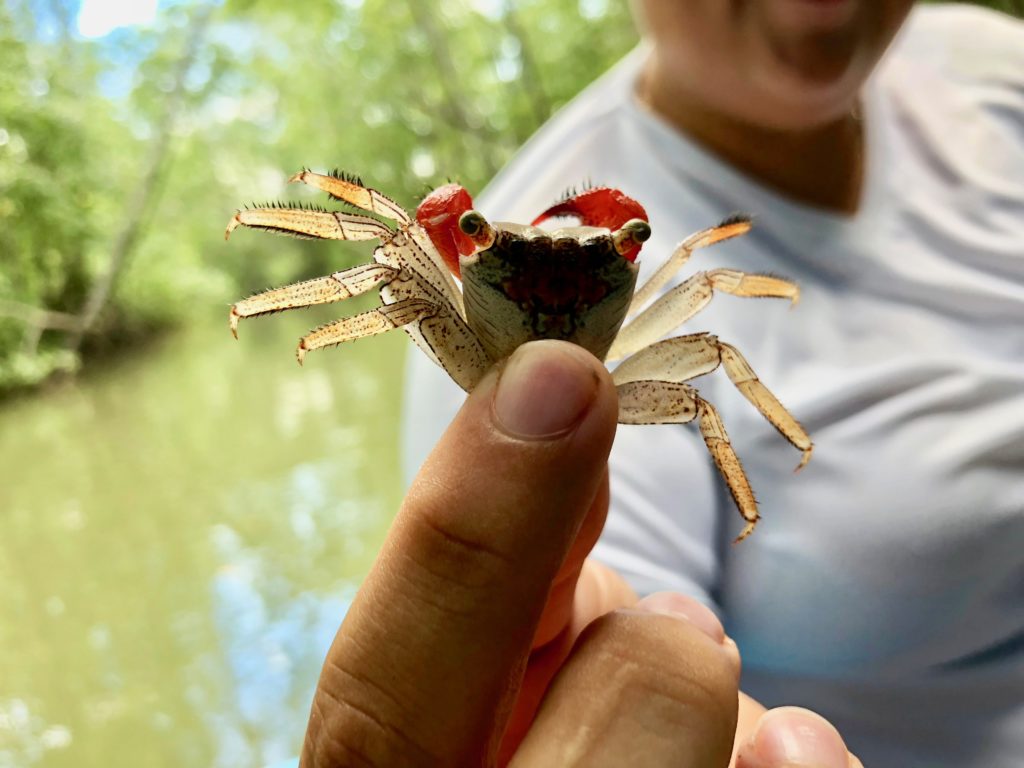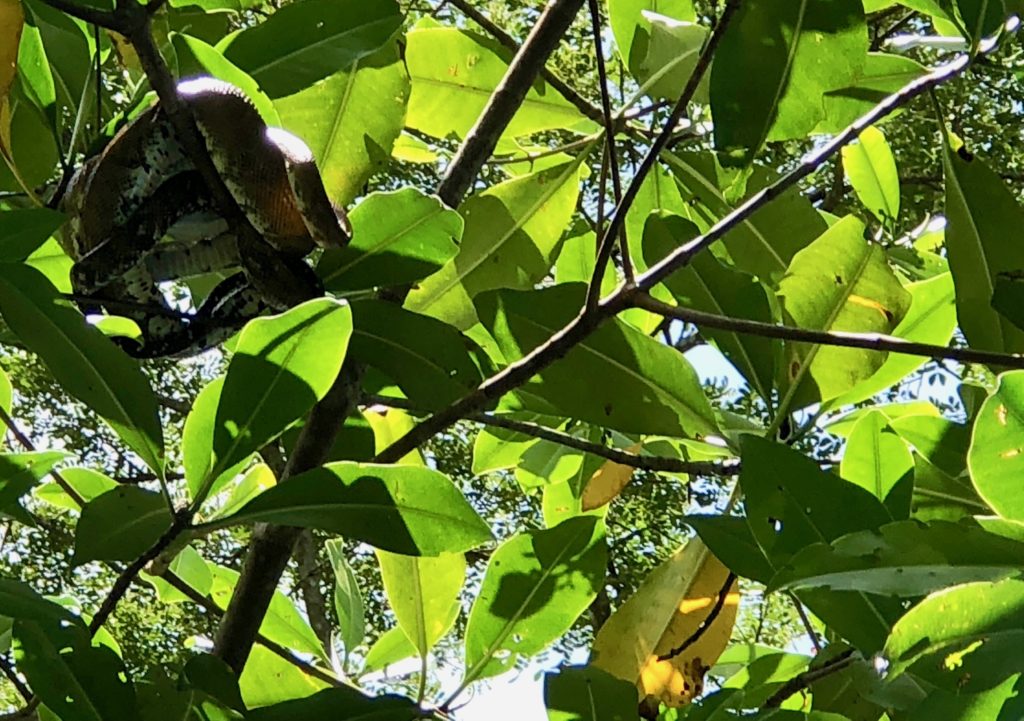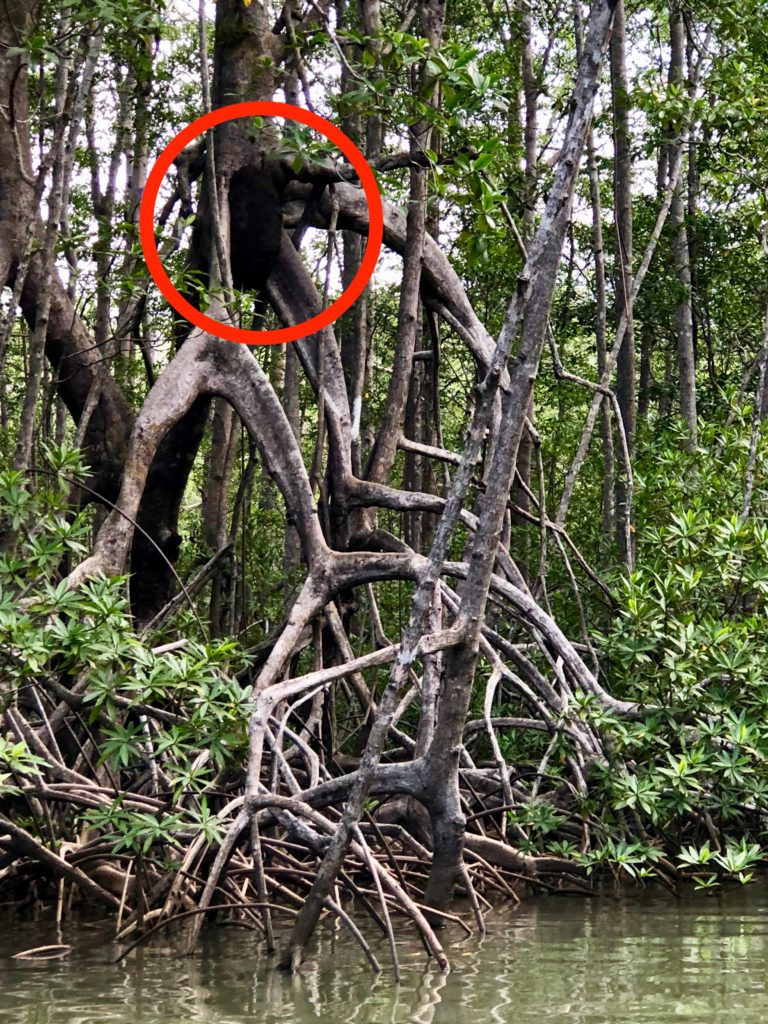Over cocktails last night, Tony and I were trying to decide what to do for our last day in Manuel Antonio. Actually, Tony wasn’t even paying attention as I processed out loud: We could go to the beach. We could do another hike. We could hang around our B&B, walking in the forest and watching the wildlife from our terrace.
Tony stared blankly at me as I counted off all the cool creatures we’d seen on this trip: sloths, howler monkeys, snakes, birds I didn’t even know existed, freaky insects, giant rodents. “You know what I haven’t seen up close? Scarlet macaws,” I said. “I’ve seen a bunch fly by our B&B, but they never stop to give me a good look.”
As Tony sipped his happy hour drink, I googled “best place to see scarlet macaws in Manuel Antonio.” The answer? The mangrove forest. So, I impulsively searched Trip Advisor for a tour in the mangrove forest, got on my phone, and booked a boat trip for the morning with William of William Mangrove Tours.
Spoiler alert: No sense waiting till the end to tell you we didn’t see any dang scarlet macaws. As I write this on our B&B balcony, about 10 of those big red jerks have squawked and flown past, mostly hidden by branches, taunting me. But I digress…
William picked us up at 8 a.m. and took us to his home in Damas, a short distance north of Quepos. We met his wife, Mary, who prepared a delicious lunch for us after the tour, and his niece, Laura, who guided our boat ride. We joined about 10 other people for a journey through the estuaries of the mangrove forest.
I may not have seen a scarlet macaw, but I did become completely fascinated by mangroves and spent much of the afternoon reading about them. (Sometimes I can’t believe how much I don’t know. How did I get to be 51 without ever learning about mangroves?)
I love this opening line of an article called “Costa Rica’s Mysterious Mangroves – A Treasured and Exotic Habitat” by Richard Garrigues, a naturalist from the States who has lived in Costa Rica since 1981.
In the nebulous zone between high and low tide, where freshwater meets saltwater and the ground is neither liquid nor solid, grow the mangroves.
Mangroves grow in brackish water, that is, water from the ocean that merges with river water at high tide. They use filtration systems to tolerate the salty sea water, and their tangled, intertwined roots create protection against strong tidal currents.
On our boat tour, we saw three different mangrove species:
* The pineapple mangrove is the least tolerant to salt water and thrives upriver, where the salinity is lower. It sits on pyramid-shaped roots.
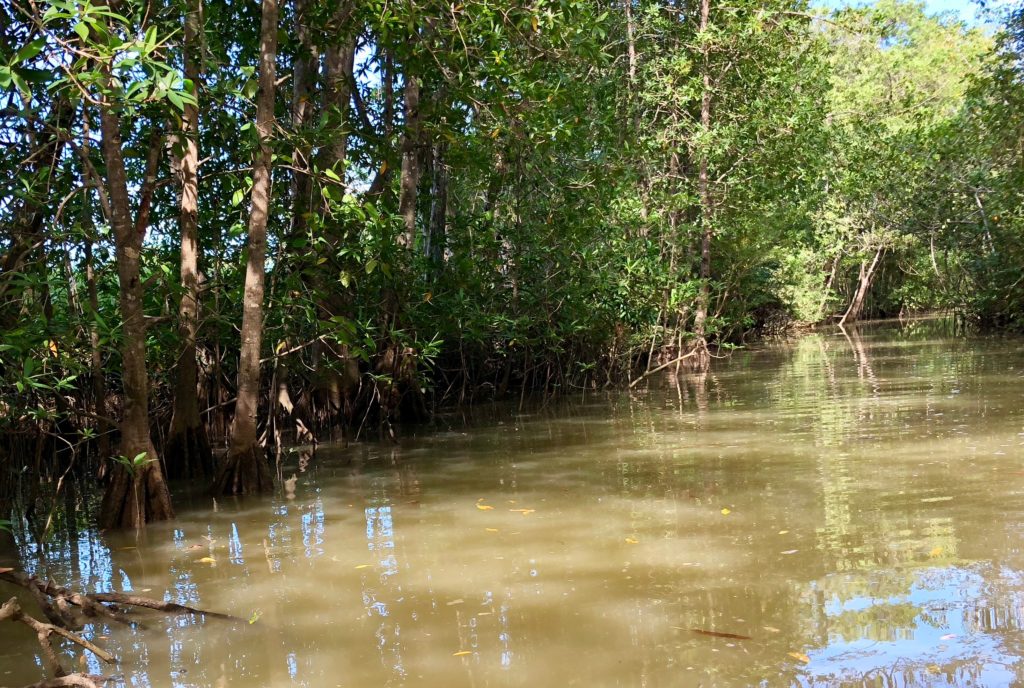
* The black mangrove is found a little closer to the mouth of the river, where the proportion of sea water is higher. This species has aerial roots that look like little straws sticking up out of the water. These pneumatophores allow the tree to breathe oxygen from the air instead of the salty soil, which is largely devoid of oxygen.
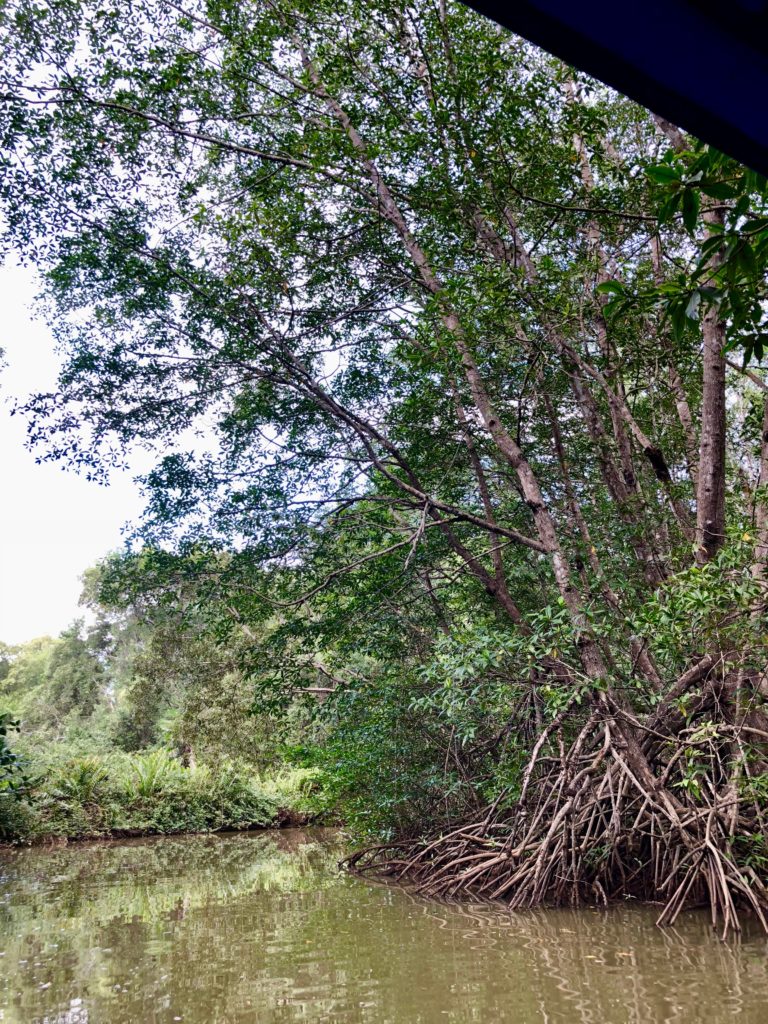
Pneumatophores look like sprouting plants, but they’re air filters!
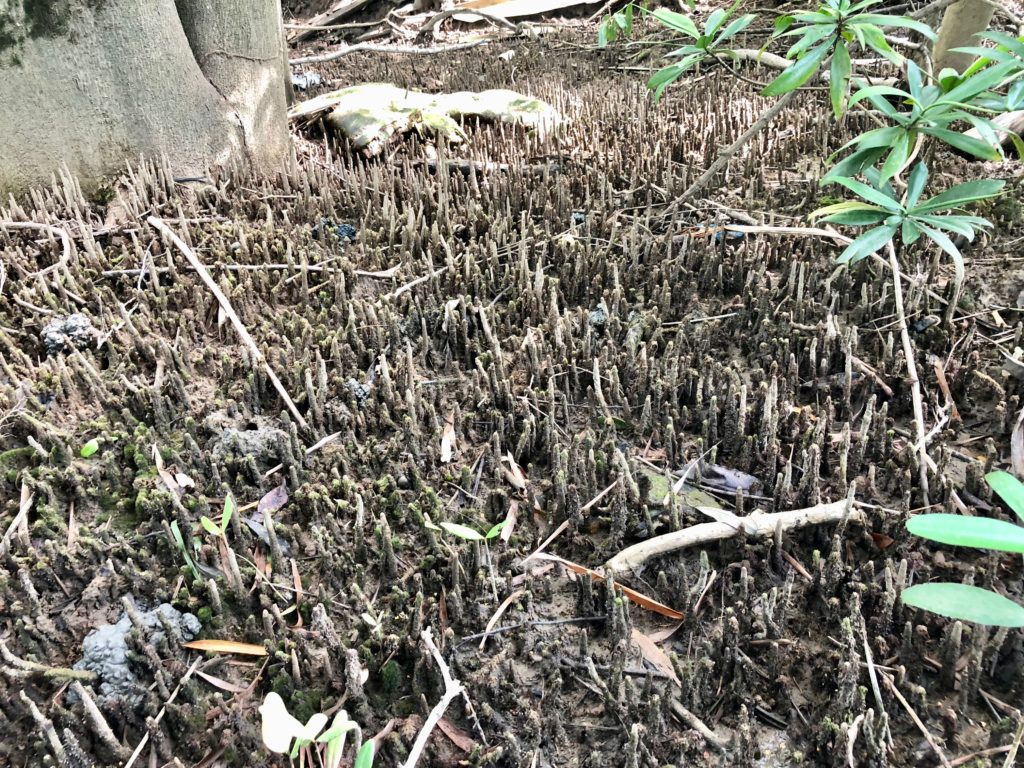
* The red mangrove is the most tolerant of salt water and grows right up to the point where the ocean meets the river. It has prop roots, which branch off in various directions, arch above the water, and interlace with neighboring tree roots before anchoring in the salty mud. The red mango’s reproduction system is pretty wacky. Its seeds, called propagules, germinate and grow into new plants before they fall from the tree.
Capuchin monkey in a red mangrove tree.
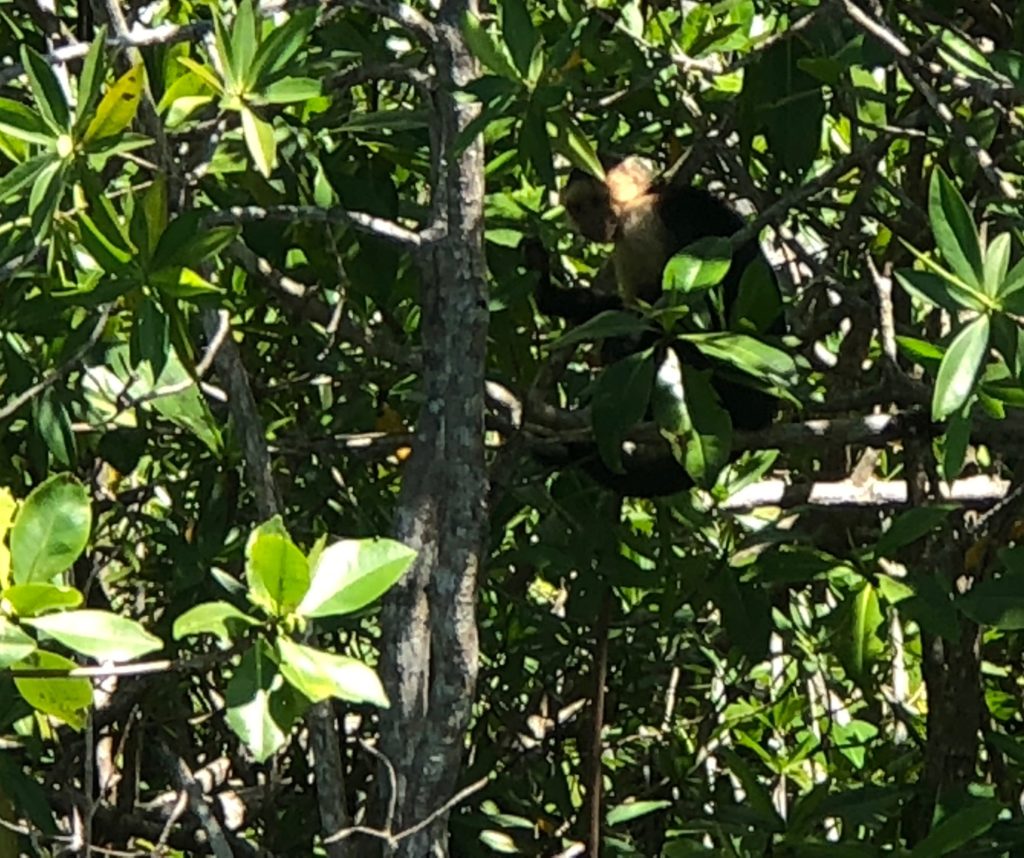
Although the mangrove forest is home to many animals, they were mostly hidden during our visit. We saw two capuchin monkeys, a rainbow boa constrictor, a few white ibis, heaps of iguanas and other lizards, a little blue heron, a tiger heron, a gajillion little crabs, and many huge termite nests that look like big black blobs on the tree trunks. Laura told us that 90% of animals in the mangrove forest eat termites.
Sure, I would have like to see a scarlet macaw. But, hey, it’s hard to feel disappointed when you spend the day looking at views like this.



